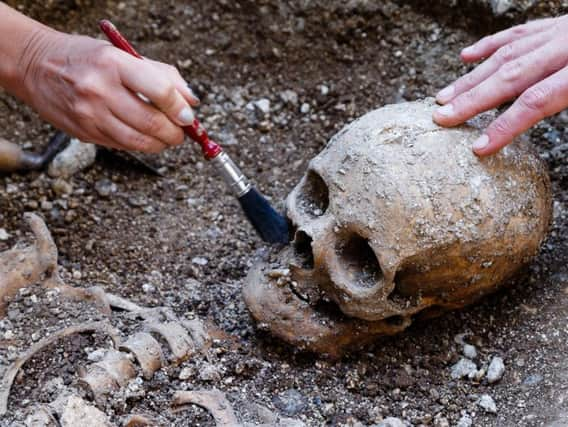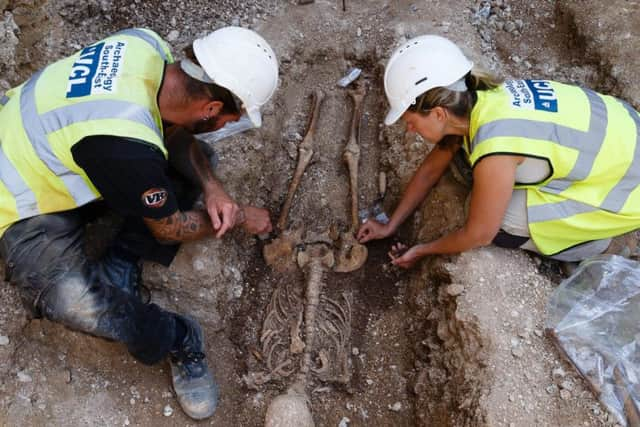Study into skeletons beneath Corn Exchange begins


The renovation of the building – which was once the Prince Regent’s stables – saw a Quaker burial ground unearthed earlier this month.
A team of archaeologists from Archaeology South-East lifted the remains to be cleaned and studied. When this is complete, decisions will be made as to whether the remains are reburied, cremated, or stored for longer term curation and study.
Advertisement
Hide AdAdvertisement
Hide AdThe remains are thought to be from ‘Quakers Croft’ – a Quaker burial ground that existed before the Royal Pavilion Estate was built, and before the Quaker meeting house moved to its current location in Meeting House Lane in 1805.


Garrett Sheehan, from Archaeology South East, said: “We believe the skeletons we have found are between two to three hundred years old. The Bishops Map from 1803 showed this area marked as Quakers Croft, and a Quaker burial ground was known to exist here – it was the extent of this that wasn’t clear until now. The construction of the Riding School here at Brighton Dome was completed in 1813 so the burials pre-date that. In this area, outside the old riding school we have a up to fifteen burials that remained undisturbed. Interestingly there are also up to five disarticulated skeletons buried here that were presumably moved during the original riding school construction.”
Cllr Alan Robins, chairman of the city’s tourism, development and culture committee, said: “The discovery of this burial site has opened up a fascinating new chapter in the history of Brighton. It will help us understand how people lived more than 200 years ago and will be added to the story and interpretation of the Royal Pavilion Estate which is being refurbished and restored for future generations.”
The work at the historic Corn Exchange is part of a project to restore the Royal Pavilion Estate buildings and gardens.
For more information about the project, visit: brightondome.org/our_future